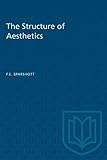The Structure of Aesthetics / F.E. Sparshott.
Material type: TextSeries: HeritagePublisher: Toronto : University of Toronto Press, [1963]Copyright date: ©1963Description: 1 online resource (486 p.)Content type:
TextSeries: HeritagePublisher: Toronto : University of Toronto Press, [1963]Copyright date: ©1963Description: 1 online resource (486 p.)Content type: - 9781487572570
- 9781487575380
- 701.17 22
- BH201 .S53 1981eb
- online - DeGruyter
| Item type | Current library | Call number | URL | Status | Notes | Barcode | |
|---|---|---|---|---|---|---|---|
 eBook
eBook
|
Biblioteca "Angelicum" Pont. Univ. S.Tommaso d'Aquino Nuvola online | online - DeGruyter (Browse shelf(Opens below)) | Online access | Not for loan (Accesso limitato) | Accesso per gli utenti autorizzati / Access for authorized users | (dgr)9781487575380 |
restricted access online access with authorization star
http://purl.org/coar/access_right/c_16ec
Aesthetics is variously identified with the philosophy of art, the philosophy of criticism, and the philosophy of beauty. The resulting confusing has meant that the condition of this branch (or branches) of philosophy has been a standing scandal; so much so that many philosopher have supposed the subject be inherently recalcitrant or in some way spurious. This book seeks to remey this situation by reducing the subject to order. It offers answers to the following questions: (1) What are the problems with which aesthetics deals? (2) What kinds of answers have been proposed or may be proposed to these questions? (3) How are these problems related to one another? (4) Are the relations between the problems such that awesthetics can form a single unified field of study? (5) In what circumstances and to what extent will aesthetics seem a branch of philosophy worthy of systematic study? Professor Sparshott's book thus places the study of aesthetics on a new footing, since it becomes for the first time possible to grasp the scope of the subject as a whole. Hitherto, no one has tried to introduce order into the subject by any other means than marking off and systimatically cultivating a small corner of the field. Now for the firs ttime the mutual bearings of these local clearings are mapped. This book is accordingly meant for all those who are seriously interested in the philosophy of art, or of criticism, or of beauty: for all those, that is, who are prepared to raise the far-reaching problems with which it deals. The author will not be dismayed if it encourages other syntheses! This book also makes incidental suggestions toward the solution of some of the problems which it organizes, and is illustrated by reference to a wide range of aesthetic literature, from Aristotle to Ziff.
Mode of access: Internet via World Wide Web.
In English.
Description based on online resource; title from PDF title page (publisher's Web site, viewed 01. Nov 2023)


